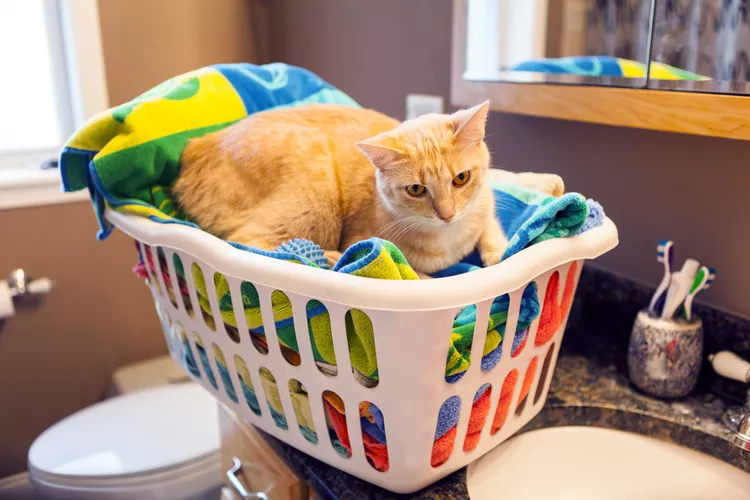What to Do if Your Cat Ate a Dryer Sheet

Curious cats and kittens can get into all kinds of inappropriate items around the house. There are many hazardous chemicals and dangerous items in the average household. Among these are fabric softeners, both in dryer sheets and liquid formulation. You may think that something like a dryer sheet is safe, but it is actually a very dangerous thing for your cat to eat.
The Danger of Dryer Sheets for Cats
Dryer sheets and fabric softeners usually contain harsh chemicals called cationic surfactants. These chemicals are in high concentrations that are released in the dryer. The chemicals coat fabrics to reduce static cling and soften their texture. In addition, most dryer sheets are made from synthetic materials that do not break down easily in the gastrointestinal tract. Both of these features make dryer sheets very dangerous to cats.
Cats are typically very sensitive to chemicals, and those in fabric softeners are no exception. The caustic chemicals can lead to irritation and ulceration in the mouth and GI tract. Skin irritation can occur as well. In serious cases, the ingestion of these harmful chemicals can lead to organ damage or central nervous system depression.
Also, a cat that eats a dryer sheet ingestion may develop gastrointestinal obstruction. A blockage in the GI tract can lead to serious illness and even death. In many cases, GI obstructions need to be removed surgically or via endoscopy. These procedures can increase the risks to your cat's health.
Secondly, the chemicals in fabric softeners can cause irritation to the skin, mucous membranes and stomach lining. In concentrated amounts, the damage may be serious and appear as burns or ulcers. In addition, some of these chemicals can lead to lung damage, central nervous system depression, and acute kidney disease.
What to Do if Your Cat Eats Fabric Softener
If you think that your cat ate a dryer sheet or drank some liquid fabric softener, it is essential to contact your veterinarian immediately. Never try to induce vomiting—this may increase the irritation to the esophagus and mouth. Gather all the details to share with the vet, such as the brand of the chemical, the time your cat ate it, approximately how much was eaten.
Depending on the situation, your vet may recommend you bring your cat into the animal hospital for treatment. It is possible that your vet will be able to recommend home treatment, but it is more likely that you will need to visit the vet in person. Try to bring the fabric softener packaging so your vet can determine exactly what your cat ate. Your vet may need to get in touch with animal poison control to find out more about the toxicity of that specific brand.
How to Keep Your Cat Safe
The best way to prevent cats from eating dryer sheets is to keep them out of reach. All chemicals in the home should be stored out of reach and, if possible, behind closed doors. Curious cats are persistent and tend to get into places where they don't belong.
If you do not have a laundry room with a door that closes, then the chemicals should be secured up high and behind secure cabinet doors. Keep the washer and dryer doors closed at all times.
Although used dryer sheets have lower concentrations of chemicals, it doesn't mean they are safe. Residual chemicals may be enough to cause irritation to your cat's skin and mouth as a result of self-grooming. Additionally, ingested used dryer sheets can still lead to intestinal blockage.
Many cats love to snuggle up in warm, clean laundry, where they might find a random dryer sheet to lick or eat. That's why you should keep clean laundry out of reach and dispose of used dryer sheets in a place where your cat can't find them. Better yet, fold and put away fabric items right after they come out of the dryer.
"Natural" and environmentally friendly products, although potentially leas harmful, are not necessarily safe. They should still be kept out of the reach of all pets in the home. If your cat eats a natural fabric softener, you should still contact the vet for advice.
Don't use fabric softeners on your cat's bedding as the residual chemicals can still cause problems. Remember that cats are fastidious groomers and may get the chemicals in their mouth.
You might have heard of people using dryer sheets to remove dead hairs from their cats' coats and reduce shedding. This never recommended since your cat is likely to lick the chemical residue from his fur.
Consider safer alternatives to chemical fabric softeners, such as dryer balls made of wool or plastic. These can soften fabrics in the dryer without chemicals. You may even find that adding clean tennis balls to the dryer works well to soften fabrics.